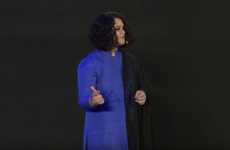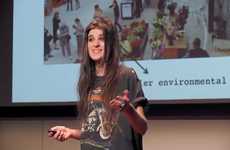
Need Inspiration?
Get inspired by 4,000+ keynote speaker videos & our founder, a top keynote speaker on innovation.
Amit Kalra's Talk on Fashion Waste Considers Positive Adjustments
Riley von Niessen — March 13, 2018 — Keynote Trends
Amit Kalra is a fashion enthusiast looking to reduce the harmful impacts that the industry has on the environment, a topic that he dives into in his talk on fashion waste for TED.
Kalra begins his talk by telling his audience about his own experiences in trying to find a cost-effective way to be stylish, which caused him to sift throughout his local thrift stores to find what he was looking for. In order to get the most out of each piece that he found, Kalra invested in a sewing machine so that he could tailor them to the proper fit. As Kalra continued with this practice, he began to wonder what happened to all the clothing that was left behind, which led him to find that only 15% of unwanted clothing went to thrift stores or was recycled, while the other 85% went to landfills in the US. This makes the fashion industry the second largest polluter in the world, just behind the oil and gas industry. In addition to filling landfills, most clothing takes a lot of water to produce, making it highly unsustainable.
In order to combat this, Kalra advises that the industry focus on creating apparel that can be recycled at the end of its life. This can be done in simple ways, such as by enabling apparel to be more easily separated, For example, this would mean allowing the zippers and buttons on a jacket to be removable. In addition, Kalra advises using more sustainable materials, and using less harsh dying processes to color clothing. With his talk on fashion waste, Kalra shows his audience how they can take small steps to lead more sustainable lifestyles, while communicating how brands can exercise similar practices to create change on a much larger scale as well.
Kalra begins his talk by telling his audience about his own experiences in trying to find a cost-effective way to be stylish, which caused him to sift throughout his local thrift stores to find what he was looking for. In order to get the most out of each piece that he found, Kalra invested in a sewing machine so that he could tailor them to the proper fit. As Kalra continued with this practice, he began to wonder what happened to all the clothing that was left behind, which led him to find that only 15% of unwanted clothing went to thrift stores or was recycled, while the other 85% went to landfills in the US. This makes the fashion industry the second largest polluter in the world, just behind the oil and gas industry. In addition to filling landfills, most clothing takes a lot of water to produce, making it highly unsustainable.
In order to combat this, Kalra advises that the industry focus on creating apparel that can be recycled at the end of its life. This can be done in simple ways, such as by enabling apparel to be more easily separated, For example, this would mean allowing the zippers and buttons on a jacket to be removable. In addition, Kalra advises using more sustainable materials, and using less harsh dying processes to color clothing. With his talk on fashion waste, Kalra shows his audience how they can take small steps to lead more sustainable lifestyles, while communicating how brands can exercise similar practices to create change on a much larger scale as well.
5.9
Score
Popularity
Activity
Freshness
















